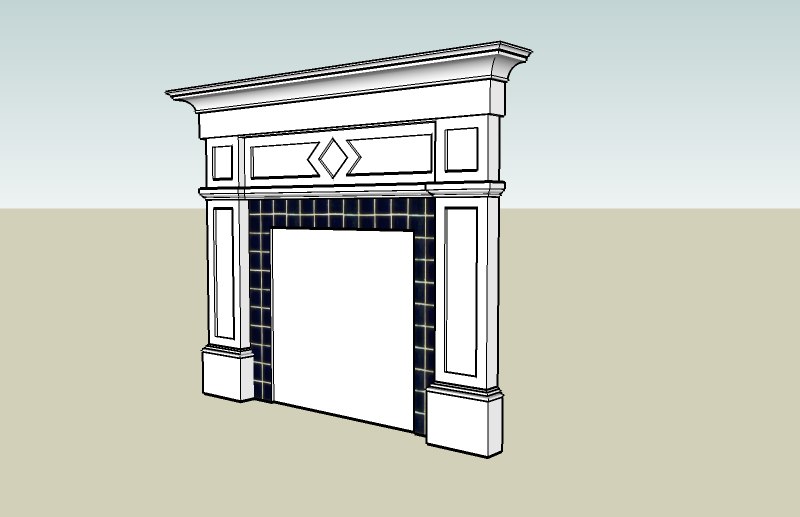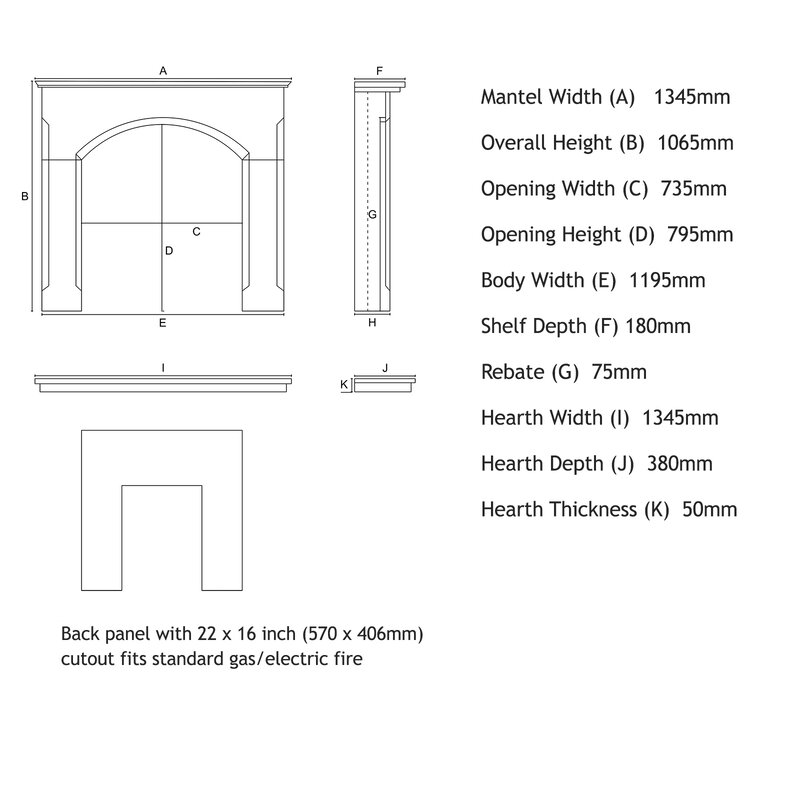Fireplace Mantel Drawings
Fireplace mantel drawings are essential architectural elements that play a significant role in interior design. These drawings, often created by architects, interior designers, or craftsmen, provide detailed plans and elevations that guide the construction and installation of fireplace mantels. They are crucial for ensuring that the mantel fits perfectly within a space, complements the overall aesthetic, and adheres to safety regulations. Mantel drawings typically include precise measurements, material specifications, and decorative elements, allowing for a clear vision of the final product. Whether the mantel is a simple, rustic design or an elaborate, classical piece, these drawings serve as a blueprint for turning creative concepts into reality.

A well-executed fireplace mantel drawing will often start with a thorough site analysis. This involves measuring the fireplace and the surrounding wall area to determine the appropriate size and proportions of the mantel. The designer must consider the height, width, and depth of the mantel to ensure it fits well within the room and aligns with the fireplace opening. Additionally, the drawings should account for the room’s architectural style and the homeowner’s preferences. For example, a mantel in a Victorian home might feature intricate carvings and ornate details, while a mantel in a modern home might emphasize clean lines and minimalist design.

Material selection is another critical aspect illustrated in fireplace mantel drawings. The choice of materials can significantly impact the mantel’s appearance, durability, and functionality. Common materials include wood, stone, marble, and metal, each offering unique aesthetic and practical benefits. Wood mantels, for instance, provide a warm and traditional look but require proper treatment to withstand heat. Stone and marble mantels, on the other hand, offer a timeless and elegant appearance and are highly durable. The drawings will specify the type, color, and finish of the materials, ensuring that all elements work harmoniously together.

In addition to basic dimensions and materials, fireplace mantel drawings often highlight detailed craftsmanship and decorative features. This includes moldings, carvings, and other ornamental details that add character and elegance to the mantel. For instance, a classical mantel might feature Corinthian columns, fluted pilasters, and intricate friezes, while a more contemporary design might include sleek, geometric shapes and understated embellishments. These details are meticulously rendered in the drawings to guide artisans and builders in replicating the design accurately.

Safety considerations are paramount in the creation of fireplace mantel drawings. The drawings must ensure that the mantel is properly distanced from the firebox and constructed from fire-resistant materials to prevent hazards. Additionally, the mantel must be securely anchored to the wall to prevent accidents. The drawings often include specifications for proper clearance from the firebox, the use of non-combustible materials, and the integration of heat shields or other safety features. Compliance with local building codes and regulations is also a critical aspect that must be addressed in the drawings.
Finally, fireplace mantel drawings are invaluable communication tools between designers, clients, and builders. They provide a clear and detailed visual representation of the project, allowing all parties to understand the scope, scale, and aesthetic of the mantel. This helps in setting realistic expectations, making informed decisions, and ensuring a smooth construction process. Revisions and adjustments can be easily made on paper before any physical work begins, saving time and resources. In essence, fireplace mantel drawings are the foundational documents that transform a designer’s vision into a tangible and beautiful centerpiece for any room.

Fireplace Mantle – Nice and Simple Life of an Architect

Decosee: Fireplace Trim

Fireplace Mantel Plans Drawings

Fireplace Mantel Drawing – Free Wallpaper

a drawing of the front and back of a fireplace, with measurements for each piece

Fireplace mantel drawings Plan Drawing, Fireplace Mantels, Shelves, How To Plan, Drawings

Fireplace Mantel Drawing Fireplace doors, Fireplace mantels, Fireplace surrounds

Fireplace Makeover: Building a New Mantel

Fireplace Mantels Plans • WoodArchivist

Related Posts:
- Oak Beam Fireplace Mantel
- Design a Fireplace Mantel Shelf
- Fireplace Mantel Proportions
- White Stone Fireplace Mantels
- Fireplace Mantel Medallions
- Fireplace Mantel Decorations Pictures
- Silk Flower Arrangements for Fireplace Mantel
- Timber Fireplace Mantels
- Corner Fireplace Mantel Shelf
- Simple Fireplace Mantel Decorating Ideas
Fireplace mantels can be a beautiful focal point in any home, adding charm and character to the space. If you are considering adding a fireplace mantel to your home, one important step in the process is creating detailed drawings of the design you have in mind. Fireplace mantel drawings are essential for ensuring that the finished product matches your vision and fits seamlessly into your space. In this guide, we will explore the benefits of creating fireplace mantel drawings, as well as the pros and cons of this process.
Benefits of Creating Fireplace Mantel Drawings
One key benefit of creating fireplace mantel drawings is that it allows you to visualize exactly how the finished mantel will look in your space. By sketching out the design and dimensions of the mantel, you can get a sense of how it will fit in with the rest of your decor and furniture. This can help you make any necessary adjustments to ensure that the mantel complements your overall aesthetic.
Another advantage of creating fireplace mantel drawings is that it provides a roadmap for the construction process. Detailed drawings can help communicate your vision to contractors or builders, ensuring that they have a clear understanding of what you want. This can help prevent miscommunications or mistakes during the installation process, resulting in a smoother and more successful project.
Creating fireplace mantel drawings also allows you to experiment with different design ideas before committing to a final plan. You can try out various styles, materials, and proportions on paper before making any decisions, helping you refine your vision and make informed choices about the finished product.
Finally, having detailed drawings of your fireplace mantel can be useful for future reference. If you ever need to make repairs or modifications to the mantel down the line, having accurate measurements and designs on hand can make these tasks much easier.
Pros and Cons of Creating Fireplace Mantel Drawings
While there are many benefits to creating fireplace mantel drawings, there are also some potential drawbacks to consider. One potential downside is that creating detailed drawings can be time-consuming and require a certain level of skill or expertise. If you are not confident in your drawing abilities, you may need to hire a professional designer or architect to help bring your vision to life.
Another potential con of creating fireplace mantel drawings is that they may limit your flexibility during the design process. Once you have finalized a drawing, making significant changes to the design can be challenging and may require starting from scratch. This can be frustrating if you later decide that you want to make alterations to the mantel.
Despite these potential drawbacks, many homeowners find that the benefits of creating fireplace mantel drawings outweigh any challenges. By taking the time to carefully plan out your design on paper, you can ensure that your finished mantel meets your expectations and enhances the beauty of your home.
Common Mistakes to Avoid
When creating fireplace mantel drawings, there are several common mistakes to avoid. One common error is failing to accurately measure the dimensions of your space before starting the design process. It is essential to take precise measurements of the area where the mantel will be installed to ensure that it fits correctly and looks proportionate in the room.
Another common mistake is overlooking safety considerations when designing your fireplace mantel. It is crucial to ensure that any combustible materials used in the construction of the mantel are placed at a safe distance from the firebox to reduce fire hazards.
Additionally, it is important not to rush through the design process when creating fireplace mantel drawings. Take your time to carefully plan out every detail of the design, including materials, finishes, and decorative elements. Rushing through this stage could result in a less-than-ideal final product.
Finally, it is essential not to overlook functionality when designing your fireplace mantel. Consider how you plan to use the mantel – whether for display purposes or as a functional storage area – and ensure that your design accommodates these needs.
1. How should I choose a style for my fireplace mantel?
When choosing a style for your fireplace mantel, consider factors such as the overall aesthetic of your home, existing decor elements, and personal preferences.
2. Do I need professional help to create fireplace mantel drawings?
While professional help may be beneficial for complex designs or if you lack drawing skills, many homeowners can create their own fireplace mantel drawings with careful planning and attention to detail.
3. What materials are commonly used for fireplace mantels?
Common materials for fireplace mantels include wood, stone, marble, tile, and metal. Each material offers unique aesthetic qualities and durability.
4. Can I customize my fireplace mantel design?
Yes! Customizing your fireplace mantel design allows you to create a unique piece that reflects your personal style and complements your home decor.
5. How long does it typically take to create fireplace mantle drawings?
The timeline for creating fireplace mantle drawings can vary depending on factors such as complexity of design, materials chosen, and level of detail required. It could range from a few days up to several weeks. In conclusion, creating fireplace mantel drawings can be a valuable step in the design process, helping you visualize the finished product, communicate your vision to builders, experiment with different ideas, and have a reference for future use.
While there may be some potential drawbacks to consider, such as the time and skill required for drawing and limitations on design flexibility, many homeowners find that the benefits outweigh these challenges. By avoiding common mistakes and carefully planning your design, you can create a beautiful fireplace mantel that enhances the beauty and functionality of your home. Remember to take accurate measurements of your space, consider safety precautions, and carefully plan out all design details.
By customizing your fireplace mantel design to suit your style and needs, you can create a unique and stunning focal point for your home. Whether you choose to create the drawings yourself or enlist the help of a professional, taking the time to plan and visualize your fireplace mantel design will ensure a successful and satisfying end result. Overall, creating fireplace mantel drawings can be a worthwhile investment of time and effort in order to achieve the desired outcome for your space.
By carefully planning and designing your fireplace mantel, you can ensure that it enhances the beauty and functionality of your home while reflecting your personal style. Remember to consider all aspects of the design process, from materials and dimensions to safety considerations and functionality, in order to create a stunning and unique focal point for your room. With attention to detail and careful planning, you can create a fireplace mantel that truly elevates the aesthetic of your space.